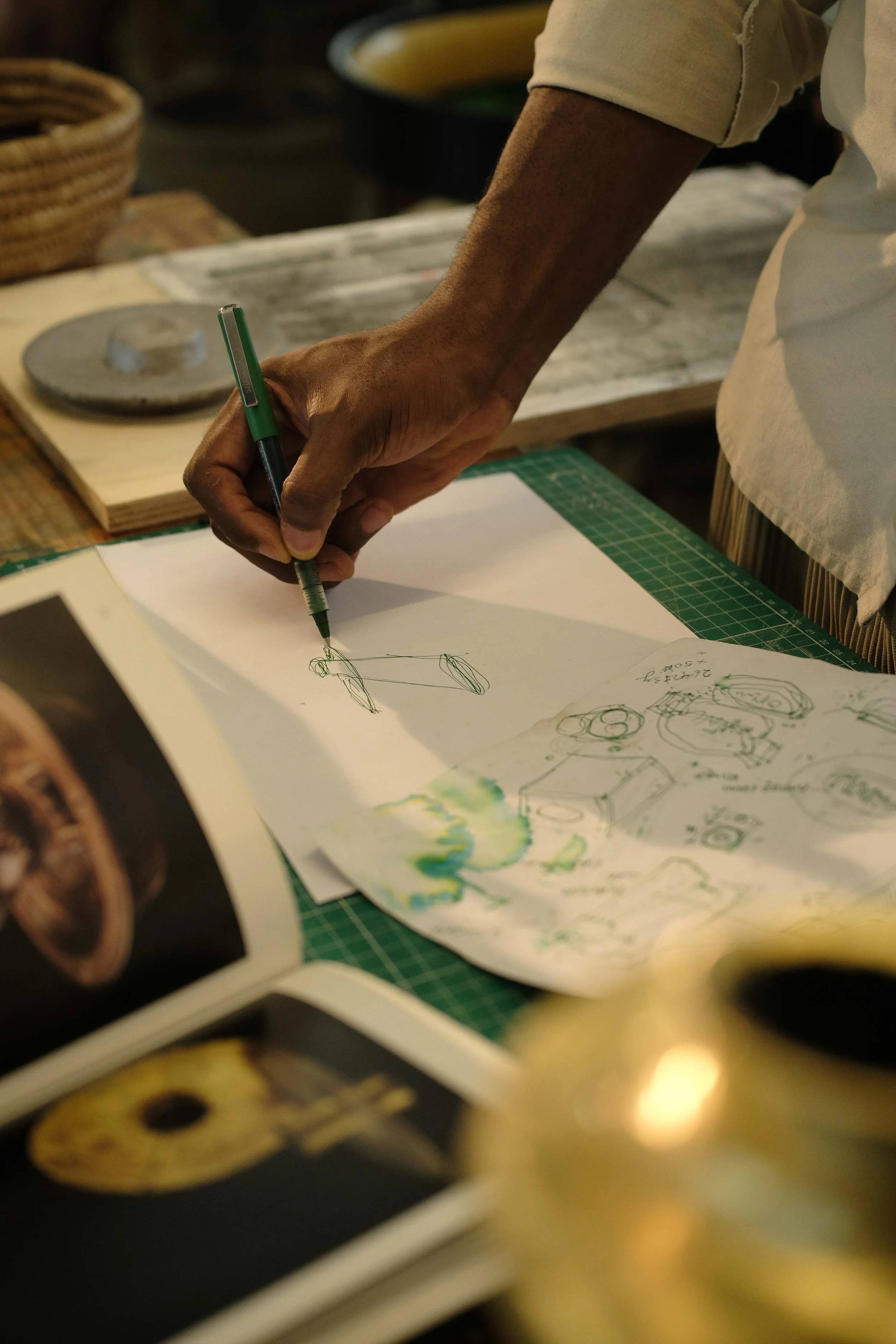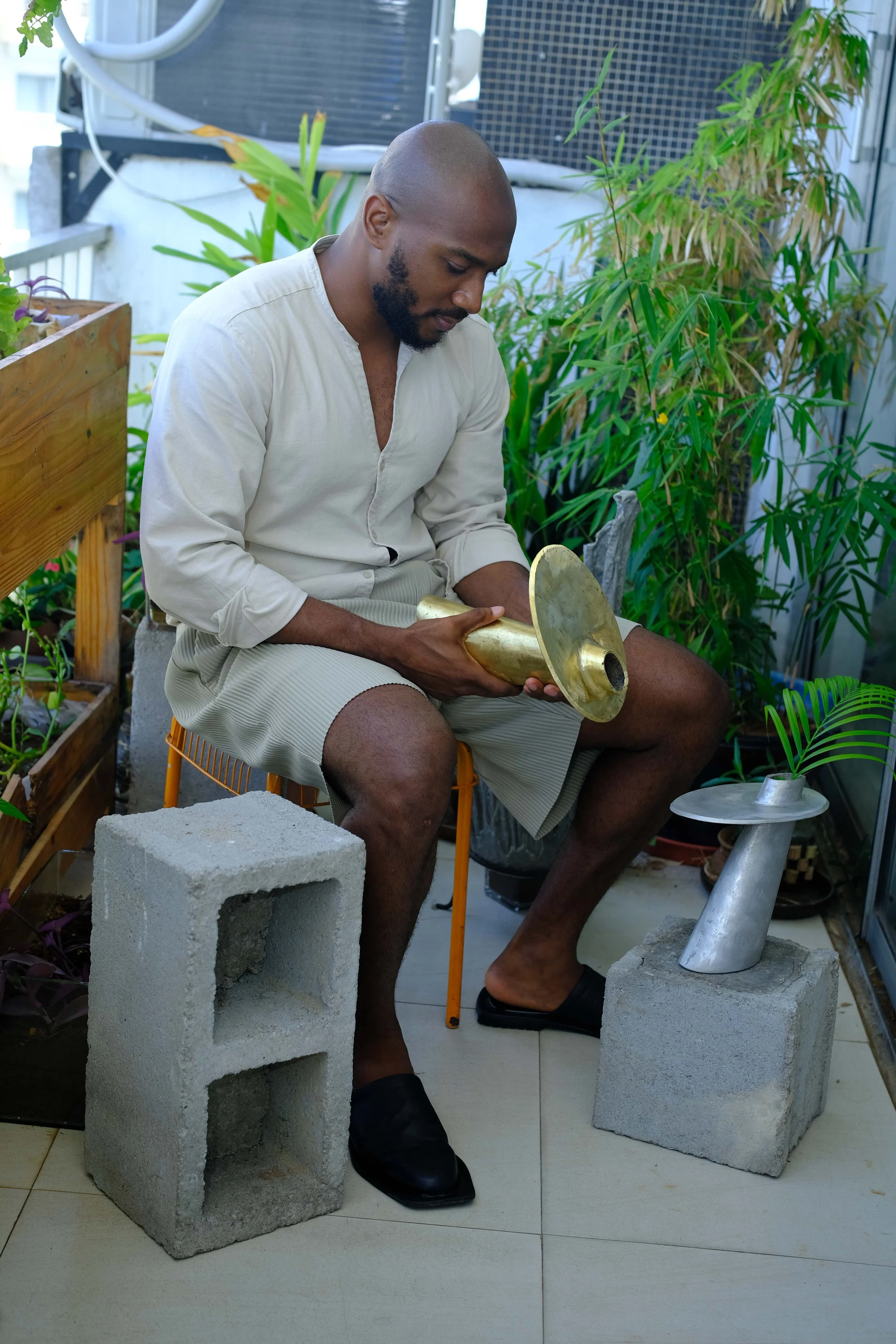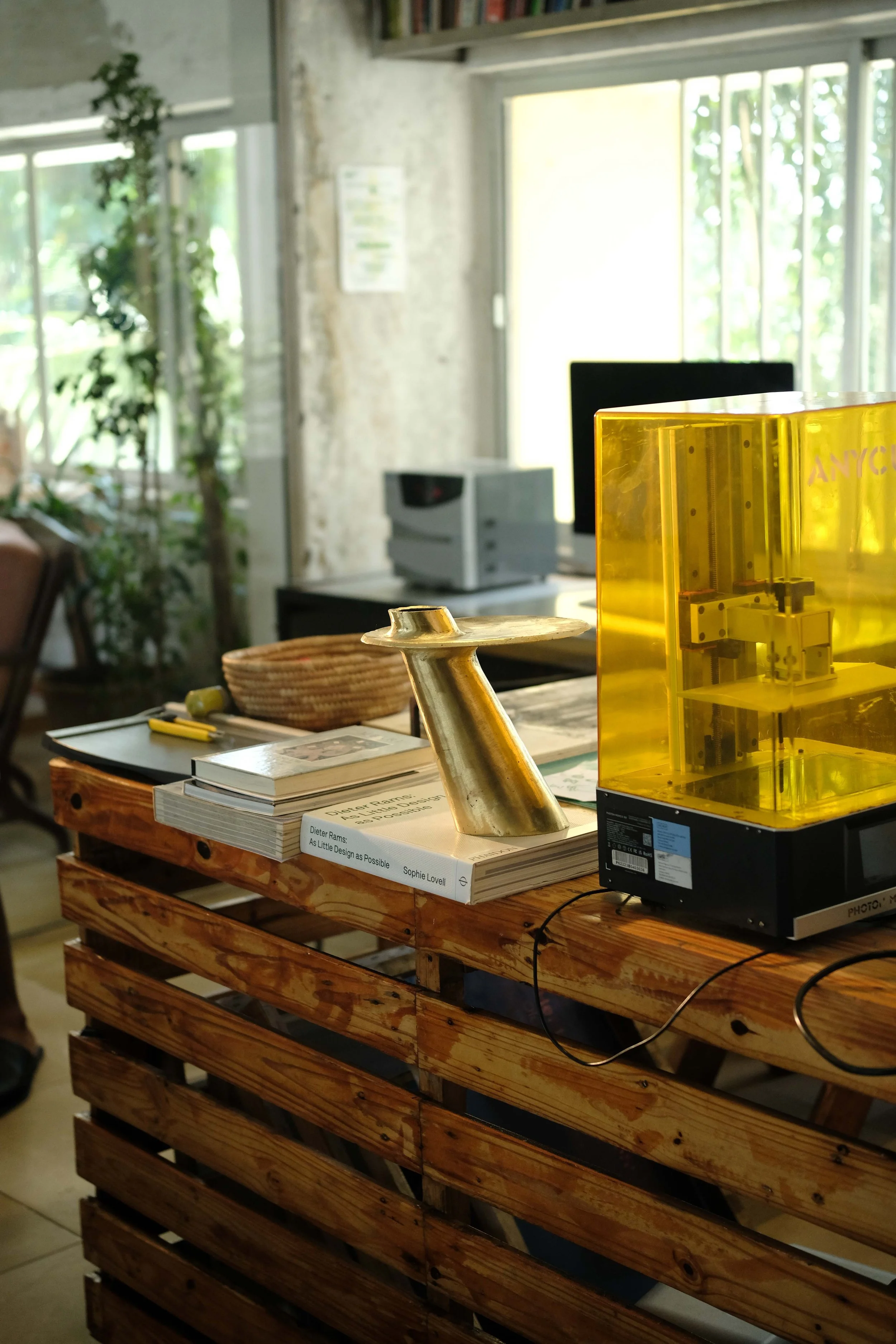A Designer’s Responsibility to Lagos - Marizu ỌNWỤ
There’s an unassuming air to Marizu when he walks into a room — calm, observant, quietly confident. You’ll often find him in a corner, deep in conversation with his designer friends — a growing circle of architects and makers redefining the edges of what Nigerian design can be.
In this quick interview, ahead of what we believe will be an illustrious career, we sit down for a rapid-fire session with the founder of ỌNWỤ Design to discuss his debut product drop, Adala — a bold first step that signals a new rhythm for contemporary Nigerian design.
Marizu Ọnwụ poses in our print studio next to his new object, Adala. © Daniel Uwaga
Tushar Hathiramani: Why design?
Marizu Ọnwụ: I’m not sure I can really say myself, to be honest...for as long as I can remember, I’ve been interested in how things work. When I was a kid, I’d take apart toys and electronics just to figure out what was going on inside. I could also draw quite well. I guess I've always loved both art and science. Anyone who’s curious about both of these things usually ends up somewhere here, I think design sits in that overlap between the two.
TH: And where did you learn design? What’s your background?
MO: I was born in Nigeria and spent most of my formative years here, but I studied architecture in the United Kingdom for both my Bachelors and Masters. I guess I have an interesting connection between the two places as I've spent a significant amount of time in both when I think about it. In some sense, I guess I'm a product of both cultures.
I consider myself an architectural and industrial designer and I think what defines our work is being able to seamlessly move between these scales, from larger architectural ideas to smaller intimate objects.
The Adala vase in brass. © Daniel Uwaga
TH: You just presented the first product of your studio - Adala. How did you arrive at this form? What inspired it?
MO: Adala was inspired by anklets of the same name that were worn by Igbo women in the past. Our research into these anklets informed the design process and narrative, translating their story into form.
We manipulated the geometry to give the piece a sense of movement, almost as if it’s about to tip over, while still maintaining its stability. That gesture echoes how the women who wore these heavy anklets had to constantly adjust their balance to keep from falling. It’s a layered object, in a sense it can be considered both a literal and metaphorical expression of an Igbo woman's poise under weight.
© Daniel Uwaga
TH: Why did you pick metal as your medium of choice to make this object?
MO: If you look through human history, up to this point at least, metal has always been a marker of technological advancement, from the Bronze Age to the Industrial Revolution, and the Space Age later on.
Though, for us on the Continent, it primarily came down to sustainability — economically and materially. I've worked with steel, but we prioritised metals such as aluminium and brass because they’re easier to recycle and make more sense in terms of overall cost, as mistakes can and will happen, especially during the prototyping phase.
TH: What was the process to make it? Share as much detail as you can.
MO: The production process is a combination of digital and physical technology and techniques. It starts with digitally 3D modelling the object alongside its moulds and patterns, then 3D printing them. These prints are then taken to the foundry, where they're used to create the sand moulds parts.
When these parts are put together they form a negative or void of the object. The metal is melted and poured into that cavity, creating the rough form of the vase. Once cooled, it’s unearthed from the sand mould, then filed, ground, and polished or sandblasted into its final finish.
This is an ideal visualisation of the process though, in reality, it's a bit more technical and gritty. I think this is normal within this context, you have to deeply understand the process and get your hands dirty every once in a while.
Adala is available in three variants - aluminium, brass and verdigris (patinated bronze). © Daniel Uwaga
TH: What are your immediate next steps for this project?
MO: We’ve recently refined the production process for the vase to a decent level, so the next phase is all about visibility. We want to push it out into the world, get it into spaces where people can see it, interact with it, and, hopefully, collect it. Both physical and digital presence matter, it’s now about allowing the piece to have a life beyond the restriction of our hands, it's lived with us long enough.
TH: What are your responsibilities to design, especially being based here in Lagos?
MO: I believe design's main responsibility is to people, and in turn, my responsibility as a designer, at the bare minimum, is to critically and creatively facilitate this. To put it in one word — sustainability. We all have a responsibility to design sustainably. But that can mean many things: economic, material, social, cultural and so on.
Honestly, I see our work going beyond the borders of Lagos, so I'm more focused on us being able to ground the practice within any context we might find ourselves. That being said, Lagos has provided a lot of invaluable lessons, mostly harsh, but that toughens you up and pushes your abilities. If one can operate at a high level here, I have no doubt they can make it happen anywhere.
Follow ỌNWỤ Design on Instagram.







